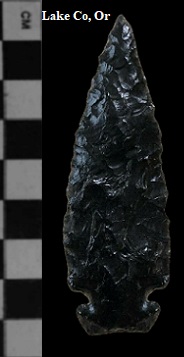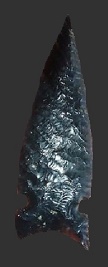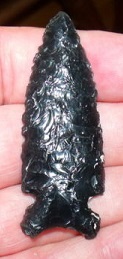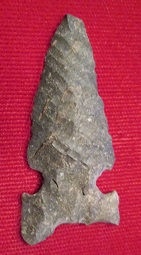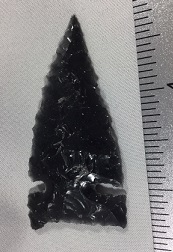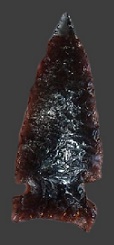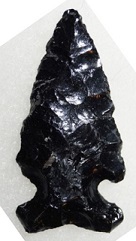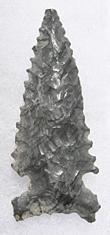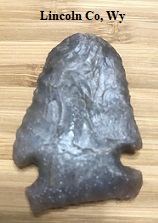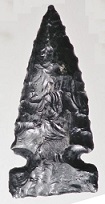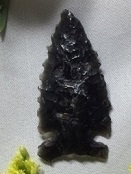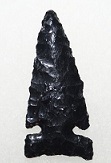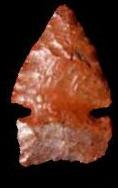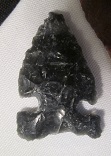Name Details:
Named By: Ruth Gruhn
Named For:
Date Identified: 1961
Type Site: Wilson Butte Cave, Idaho
Northern Side Notch
AKA:
Silent Snake
Madeline Dunes
Cluster: Northern Side Notch Cluster
Commonly Utilized Material:
The most commonly used material is obsidian followed by
chalcedony, rhyolite, and ,local and exotic cherts
Date:
Cultural Period:
7,500 to 6,400 B.P.
Early Archaic
Middle Holocene
Glacial Period:
Culture:
Outline is Representative of Size and Shape:
Description of Physical Characteristics and Flaking Pattern:
This is a medium to large triangular point with a thin elliptical cross section. The blade is
primarily straight but may range to excurvate. This point has parallel notches lower on the blade that enter the blade horizontally, but may vary to having a diagonal
placement. The notches are generally U-shaped. The shoulders are horizontal and usually the same width as the blade
which forma an expanded stem. The basal edge (ears) are usually contracting. The base is concave and commonly has basal
thinning, but basal grinding may be light when present. This point usually has a random flaking pattern, but parallel oblique flaking is sometimes seen.
Size Measurements: Total Length - 28 to
114 mm (average 40 to 60 mm), Stem Length - 11 to 16 mm, Blade
Width - 16 to 34 mm, Neck Width - 9 to 17 mm,
Stem Width - 14 to 33 mm, Thickness - 4 to 8 mm
Distribution:
Distribution Comments:
This point is found across the Colorado Plateau, the Uncompahgre Plateau, the Great Basin, the southern Columbia Plateau, and the Snake River plain.
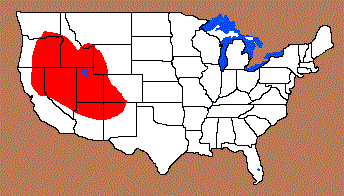
Similar Points:
Bitterroot, Cut Bank, Chilcotin, Cold Springs, Diablo Canyon, Irvine, Jalama, Mallory, Nightfire, Plains Side Notch, Prairie Side Notch, San Pedro, Willits Related / Associated Points:
Additional Comments:
This is a broad category of Archaic Side Notched points. The primary identification for this type of point is the placement of the side notch. For this point, the notch is lower on the
blade and the blade edge on the ears are tapering in.
The Bitterroot and Cold Springs definitions overlap that of the Northern Side Notch. Holmer (1980) did an analysis of the Northern and Bitterroot type and found that they could not be consistently distinguished
between the two types.
Elko types may be distinguished by the diagonal notch that enters the blade as compared to the U-Shaped notched that this point has. However, this is not a definite diagnostic attribute between
the two. Justice (2002) suggest that other distinguishing features between the Elko and Northern include the Elko Cluster generally has sharp corners at the notch margins while Northern points have basal ears
that are squared.
Point Validity: Valid Type
Gruhn is pioneering anthropologist who conducted extensive studies into the Wilson Butte Cave and through-out the Great Basin. She was a founding member of the Department of
Anthropology at the University of Alberta and serves as curator for the University's Museum. This type was named in a professional publication and has many professional references. This is considered a
valid type.
.
Age Details:
References: (See Reference Page, Entry Number):
16,
32, 33, 34, 35, 39, 167
Northern Projectile Point, Northern Arrowhead

